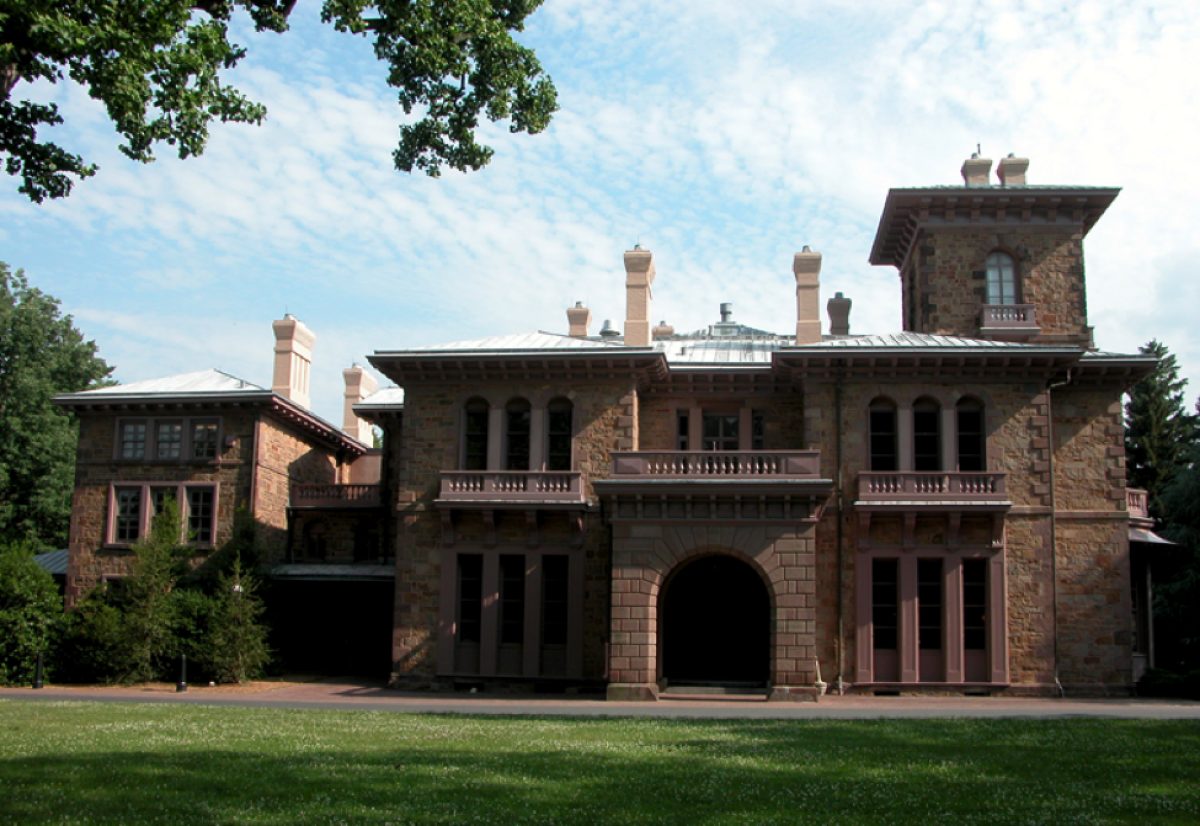[1]
William K. Selden, Prospect House at Princeton University: A National Historic Landmark (Princeton University, 1999), 1.
⤴
[2]
John F. Hageman, History of Princeton and Its Institutions, Vol. 2 (Philadelphia: J.B. Lippincott &, 1879), 310.
⤴
[3]
George Morgan started as an apprentice for Baynton and Wharton. He was made a partner in the fall of 1763 and the firm became Baynton, Wharton, and Morgan. See Max Savelle, George Morgan, Colony Builder (New York:Columbia University Press, 1932), 7.
⤴
[6]
Department of Grounds and Buildings Subject Files (AC110- Princeton University Archives, Department of Rare Books and Special Collections, Princeton University Mudd Library), Series 1, Box 8, Folder 14, Buildings/Prospect—Morgan Farm. “Prospect near Princeton” by Henry L. Savage, Archivist (1957), 3.
⤴
[7]
Ibid., 166. He again pays Cezar Trent in December of 1787 for cutting and carrying firewood “up stairs in College” and for cleaning the room of Tommy Hutchins and George Morgan White Eyes (192).
⤴
[11]
The Pennsylvania Packet, 30 May 1780, p. 3.
⤴
[12]
George Morgan, “Account Book: Princeton,” George Morgan Collection, 1759-1806, Princeton University Archives, Department of Rare Books and Special Collection.
⤴
[13]
Varnum L. Collins, "Indian Wards at Princeton," Princeton University Alumni Bulletin 13: 101-06.
⤴
[14]
George Morgan, “Account Book: Princeton,” 83.
⤴
[16]
Richard Harrison, Princetonians, 1784-1789: A Biographical Dictionary (Princeton, NJ: Princeton University Press, 1981), 414.
⤴
[17]
George Morgan, “Account Book: Princeton,” 146.
⤴
[18]
Harrison, Princetonians, 1784-1789: A Biographical Dictionary, 109.
⤴
[19]
Hageman, History of Princeton and Its Institutions, Vol. 2, 187.
⤴
[20]
John H. Muse, Correspondence with My Son, Henry Kirk Muse: Embracing Some Brief Memorials of His Character and Essays from His Pen, While a Student at Princeton College, New Jersey (New York: John A. Gray Printer, 1858), 154.
⤴
[21]
Department of Grounds and Buildings Subject Files (AC110- Princeton University Archives, Department of Rare Books and Special Collections, Princeton University Mudd Library), Series 1, Box 8, Folder 14, Buildings/Prospect—Morgan Farm. “Prospect near Princeton” by Henry L. Savage, Archivist (1957), 7.
⤴
[22]
Cezar Trent (1813), New Jersey Abstract of Wills, 1670-1817, 383.
⤴
[23]
Mary Granger, ed., Savannah River Plantations (Savannah, GA: Georgia Historical Society, 1942), 225.
In addition to this secondary source, the 1820 Federal Census for Charleston, South Carolina, lists fourteen enslaved people in John Potter’s household.
⤴
[24]
Granger, Savannah River Plantations, 226.
⤴
[25]
Ira Berlin, Generations of Captivity: A History of African-American Slaves (Cambridge, MA: Belknap of Harvard University Press, 2003), 71.
⤴
[26]
John E. Watkins, Camden and Amboy Railroad: Origin and Early History (Washington, D.C.: Gedney & Roberts, 1891), 26.
⤴
[27]
Hageman, History of Princeton and Its Institutions, Vol 1. Hageman explains that John Potter “owned valuable plantations in the South, and so did his sons, retaining them till their death, and generally spending the winter there” (314).
⤴
[28]
Granger, Savannah River Plantations, 225.
⤴
[29]
Hageman, History of Princeton and Its Institutions, Vol 1., 282.
⤴






